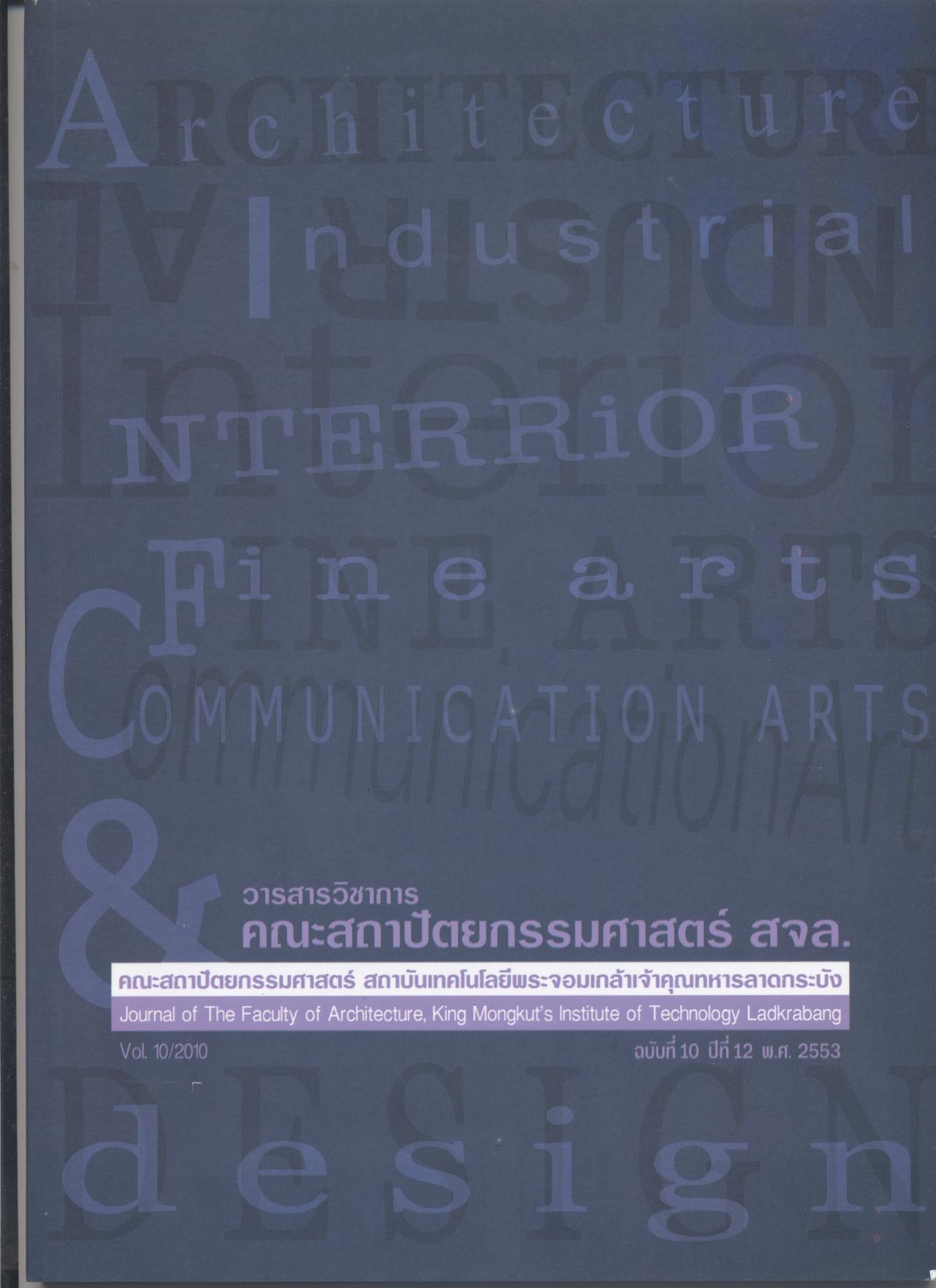อาคารและสิ่งปลูกสร้างที่ไม่สูญเสียในสภาวะน้ำท่วม
Main Article Content
Abstract
บทคัดย่อ
อาคารและสิ่งปลูกสร้างในที่ลุ่มโดยทั่วไปมีอายุการใช้งานสั้น โดยเฉพาะอย่างยิ่งอาคารที่ตั้งอยู่ในภูมิประเทศที่มีน้ำท่วมขัง ปัญหาอีกอย่างหนึ่งที่ซ้ำเติมก็คือปรากฏการณ์แผ่นดินทรุดตัวอย่างต่อเนื่อง การศึกษาเรื่องนี้พบว่าเสาตอม่อของอาคารหลังหนึ่งในสถาบันเทคโนโลยีพระจอมเกล้าเจ้าคุณทหารลาดกระบังที่จมน้ำอยู่ประมาณ 30-35 ปี มีโครงสร้างเสาของอาคารถูกกัดกร่อนจนสูญเสียพื้นที่หน้าตัดของวัสดุโครงสร้างไปมากกว่าร้อยละ 80 จนต้องหยุดให้บริการงานใช้สอยโดยสิ้นเชิงเพื่อหลีกเลี่ยงอันตรายอันอาจจะเกิดจากการวิบัติ ปัญหาดังกล่าวเกิดขึ้นกับอาคารที่มีส่วนของโครงสร้างหลักนั้นจมน้ำอยู่ ทำให้เกิดคำถามถึงแนวทางแก้ไขและป้องกันความเสียหายดังกล่าวในระยะยาวสำหรับอาคารที่ปลูกสร้างในสภาพภูมิศาสตร์เช่นนี้
คำสำคัญ : การกัดกร่อนจากคลอไรด์, อะควาแรพพ์, ความซึมได้ในคอนกรีต, น้ำกร่อย, แผ่นสังเคราะห์กั้นน้ำ “FRP“
Abstract
Under a flooded environment corrosion can occur to the building structures in moderate climates, besides, the soil-subsidence phenomenon is yet an aggravating factor to the damages. The author found that main rebars and the covering concrete of 42 footing-columns of a brackish-water submerged reinforced concrete building in KMITL campus was about 80% corroded after approximately 30-35 years of service life. All service activities of the building then were strictly prohibited waiting for a reasonable resolution for the problem. The said damages are commonly seen and thus raise a big question of how the submerged structures can be saved, especially in the flood-prone environment which will prevail in this specific Geography.
Keywords : Depassivation of steel, Chloride induced corrosion, Aqua wrap, Permeability of concrete, Brackish water, Fiber Reinforced Plastic (FRP)
Article Details
This work is licensed under a Creative Commons Attribution-NonCommercial-ShareAlike 4.0 International License.
Copyright Transfer Statement
The copyright of this article is transferred to Journal of The Faculty of Architecture King Mongkut's Institute of Technology Ladkrabang with effect if and when the article is accepted for publication. The copyright transfer covers the exclusive right to reproduce and distribute the article, including reprints, translations, photographic reproductions, electronic form (offline, online) or any other reproductions of similar nature.
The author warrants that this contribution is original and that he/she has full power to make this grant. The author signs for and accepts responsibility for releasing this material on behalf of any and all co-authors.

